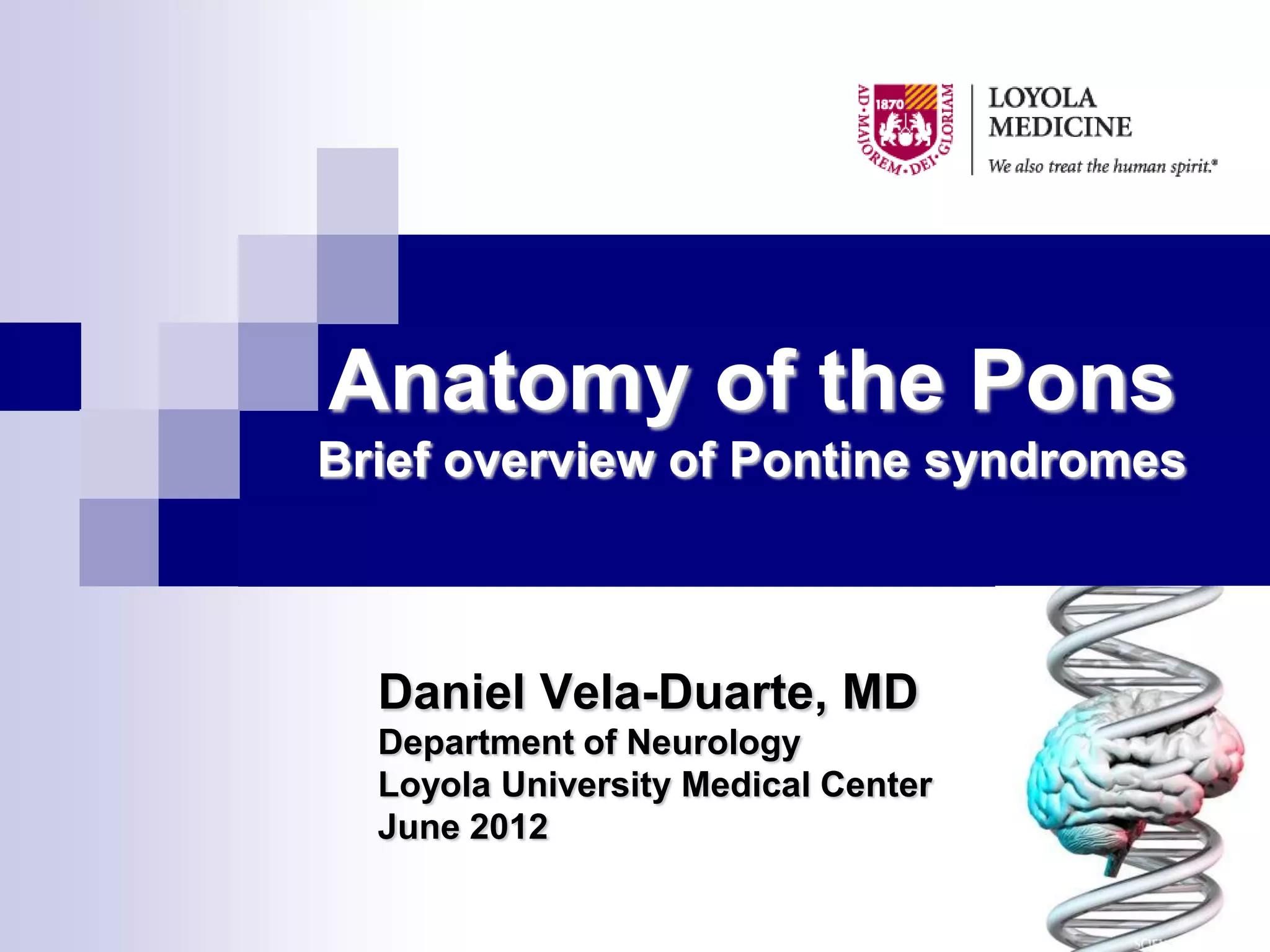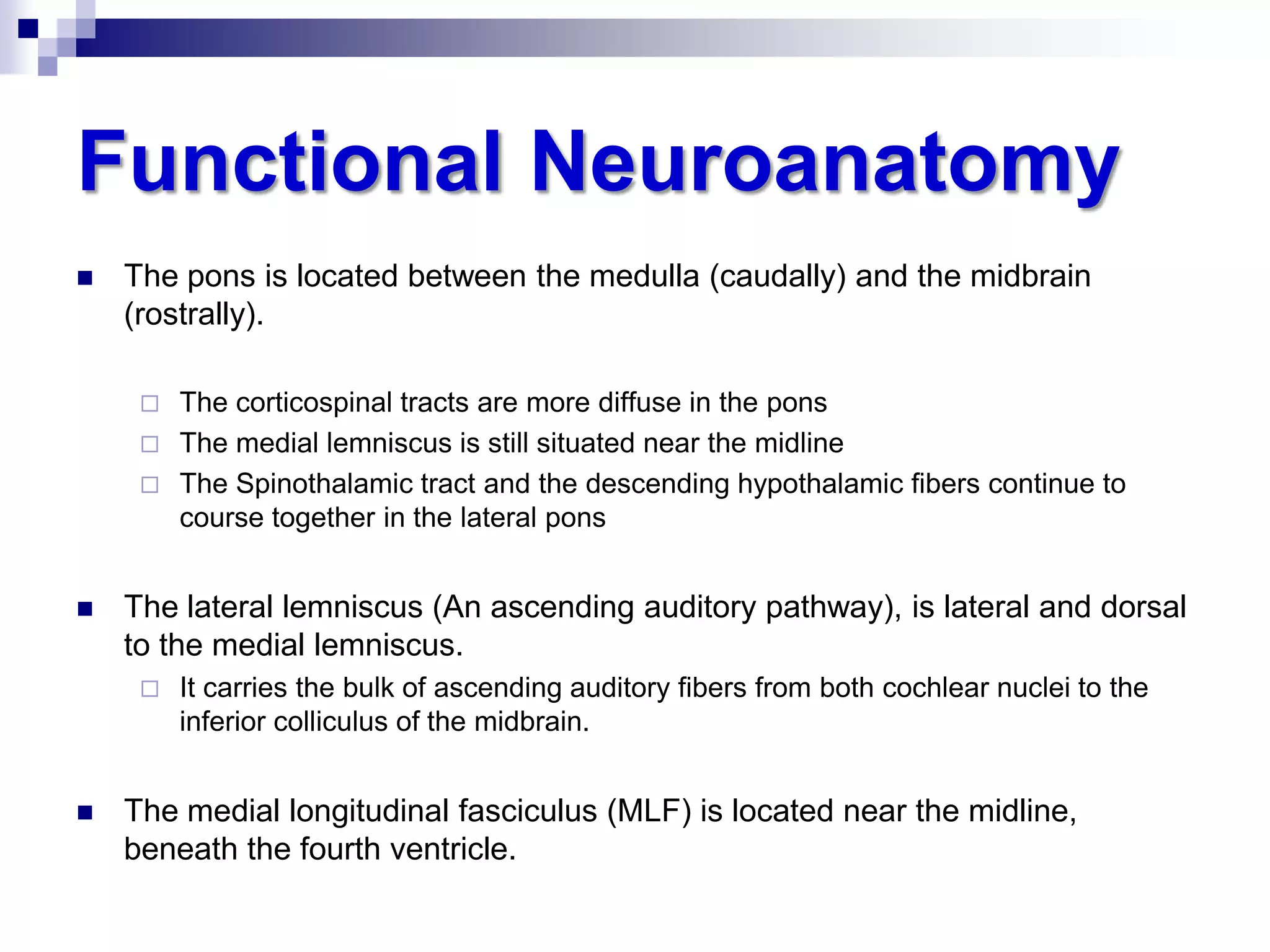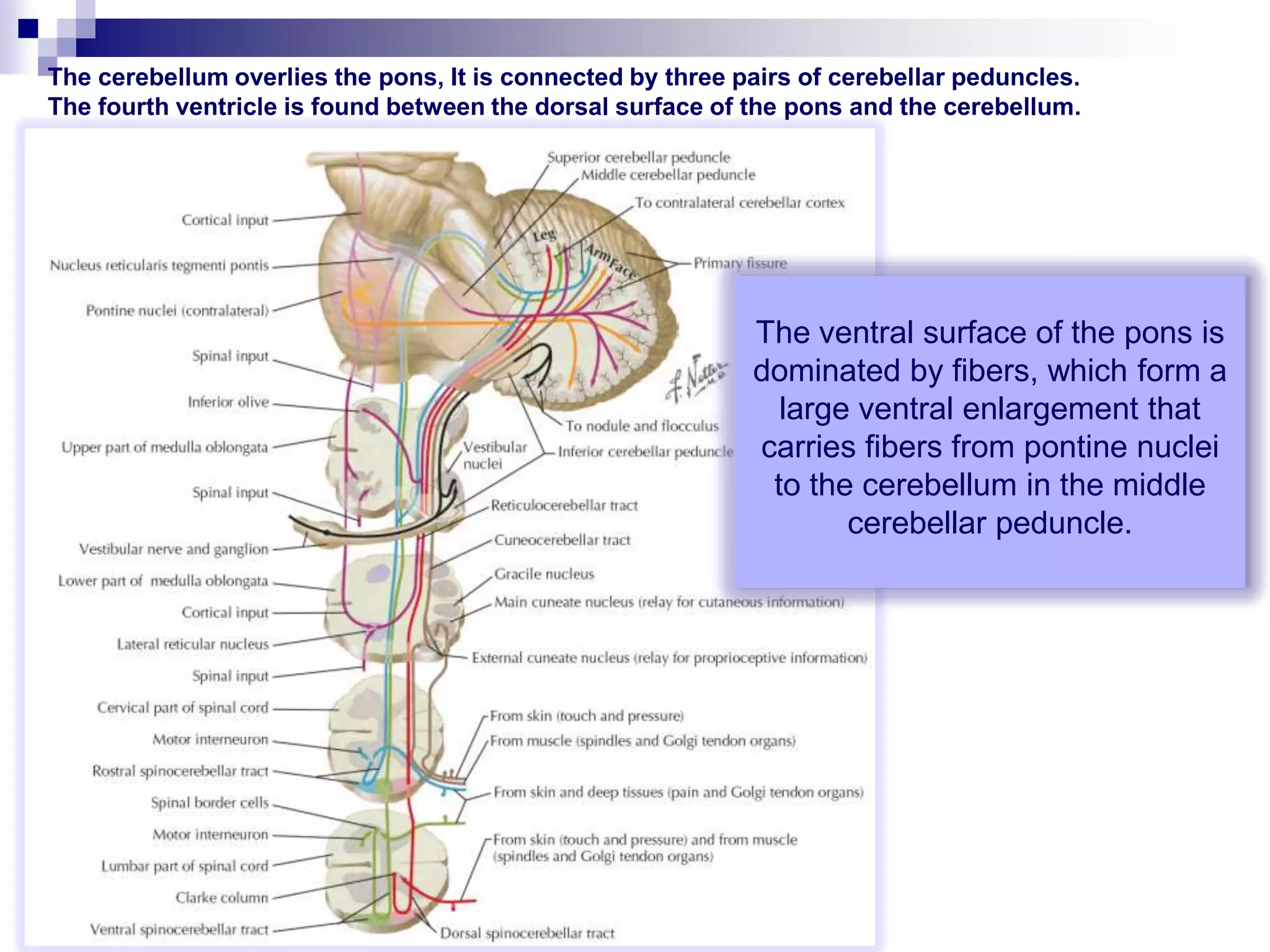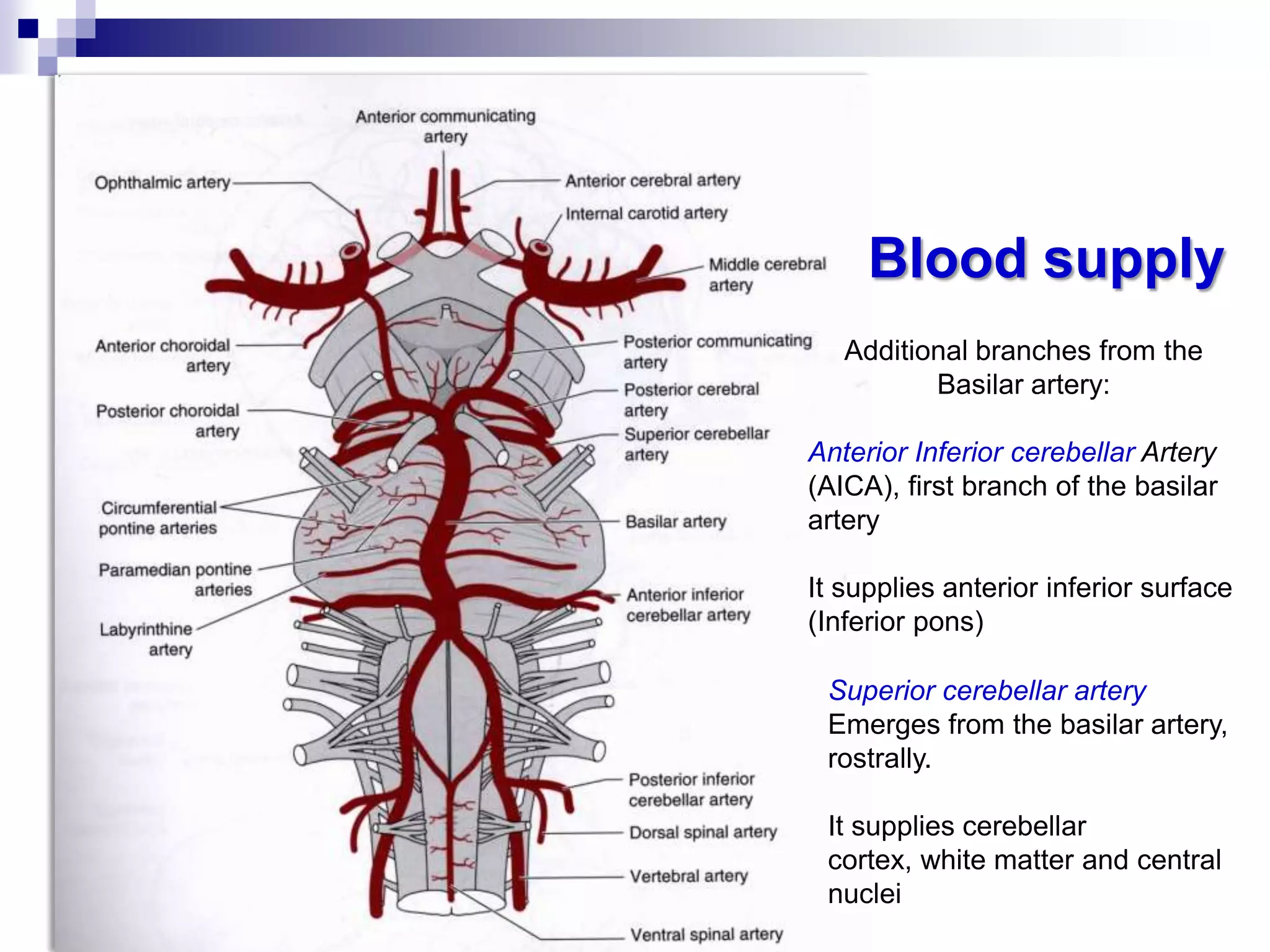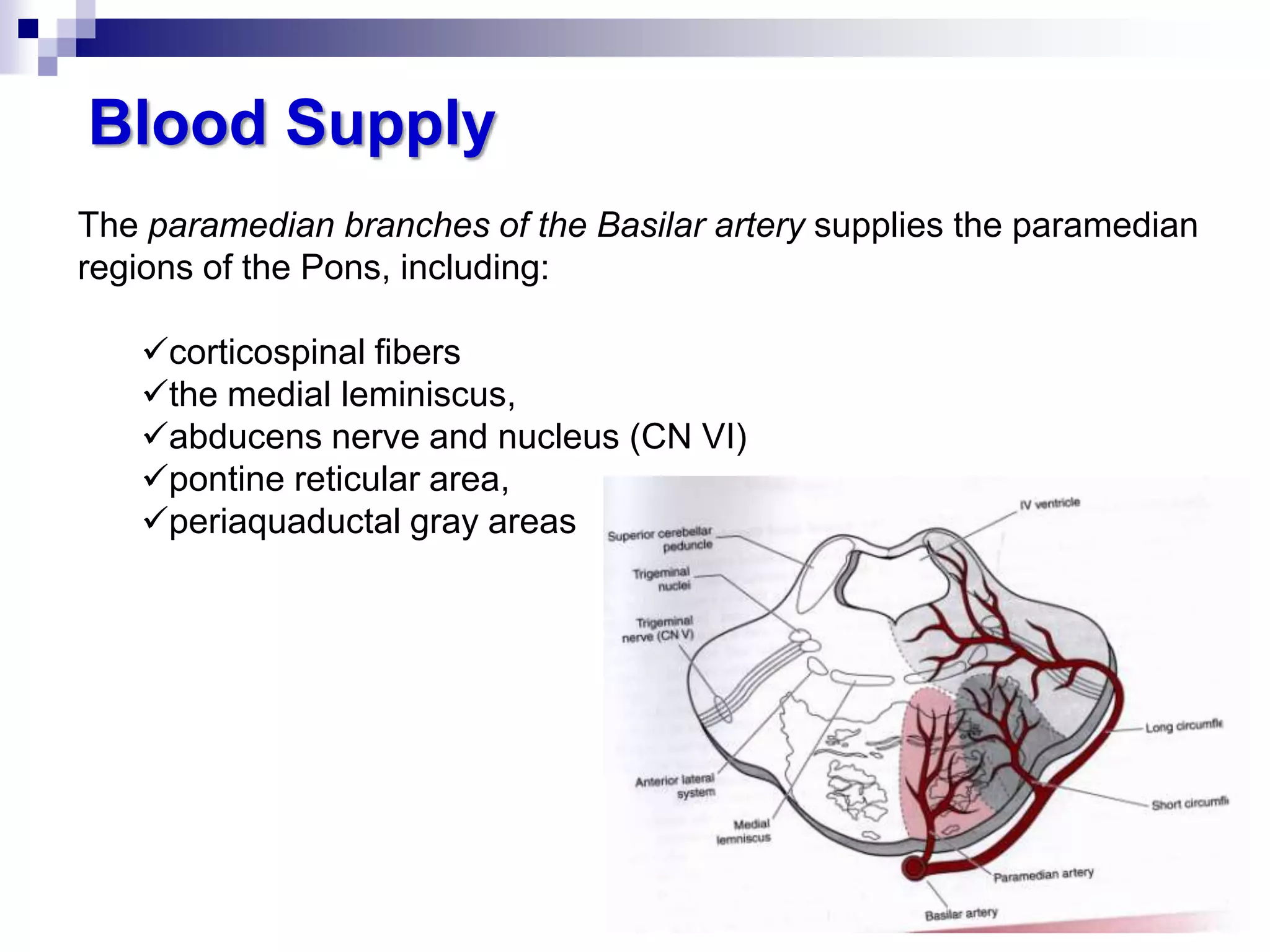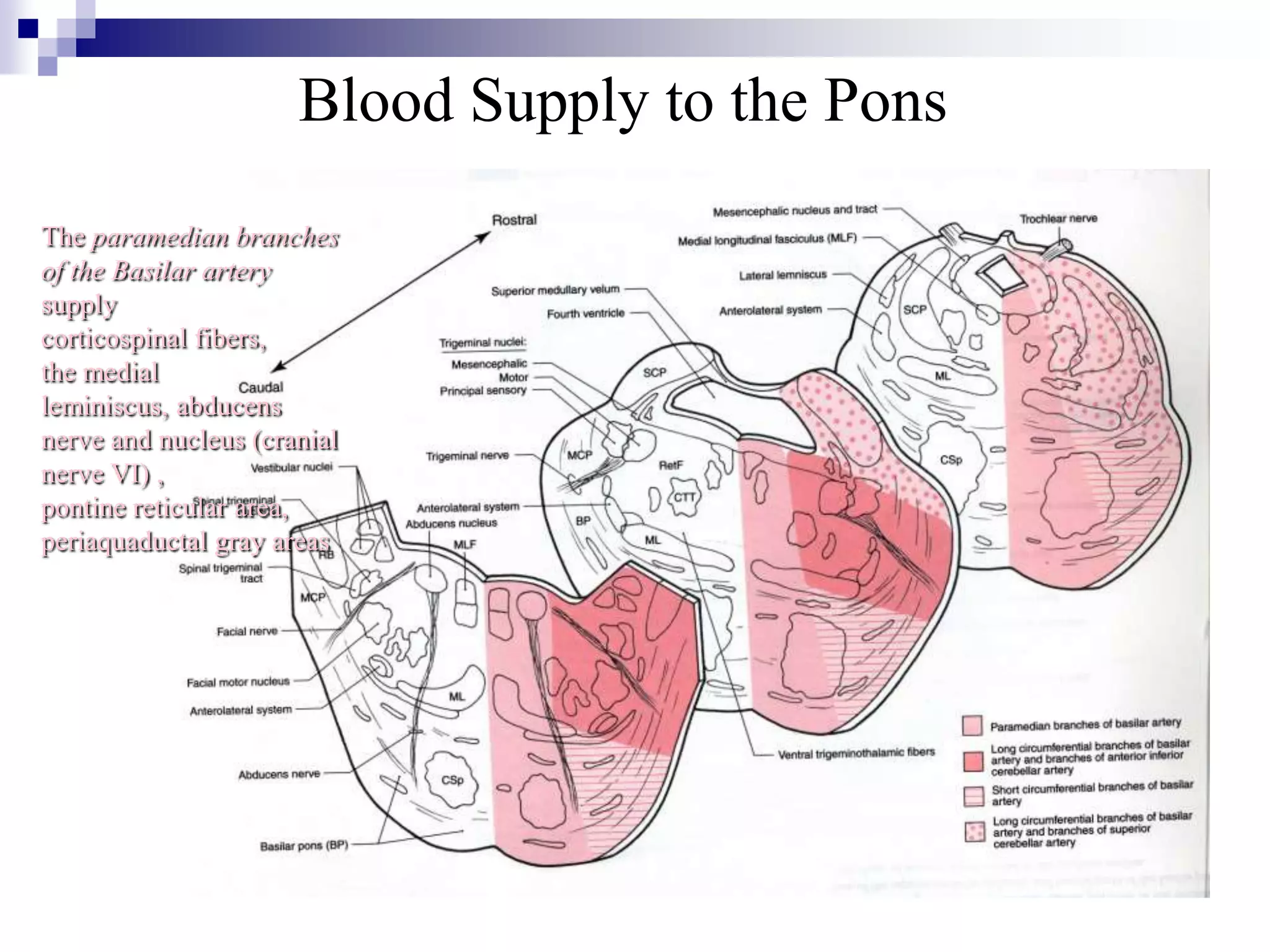1) A 48-year old man experienced sudden weakness in his left arm and leg, double vision, and loss of vibratory and positional sense on the left side. Exam found spastic paresis of the left extremities, ataxic gait, and paralysis of conjugate gaze to the right.
2) A 55-year old man fell unable to move his right arm and leg. Exam found diminished strength, increased reflexes, and clonus in the right extremities, and uncoordinated movements of the left extremities. He was unable to elevate his mouth or blow out his right cheek upon smiling.
3) An MRI showed a bilateral hyperintense signal in
